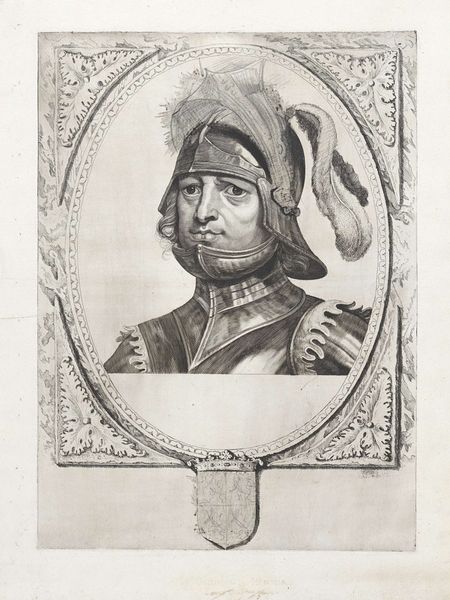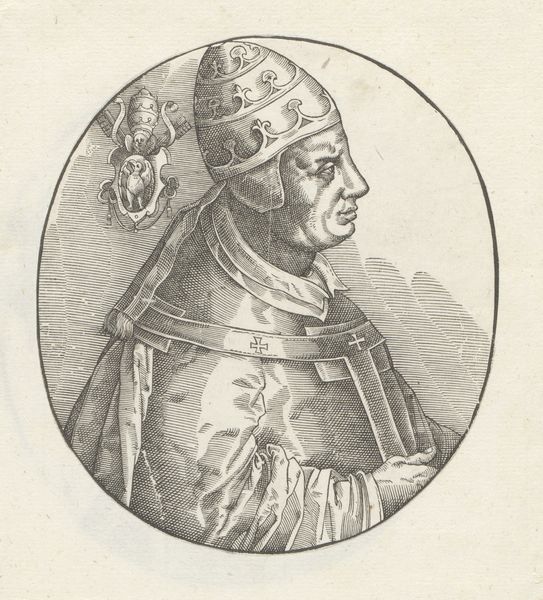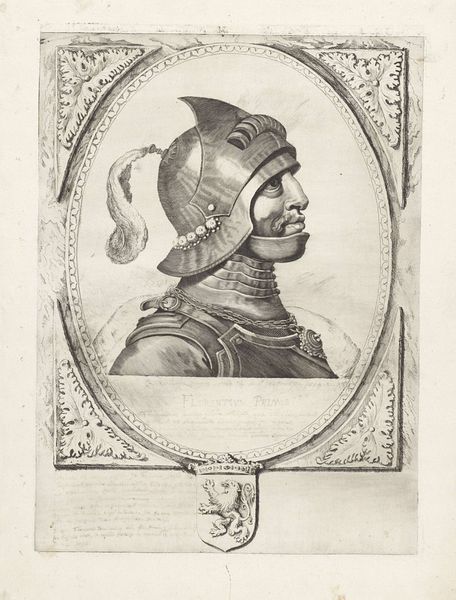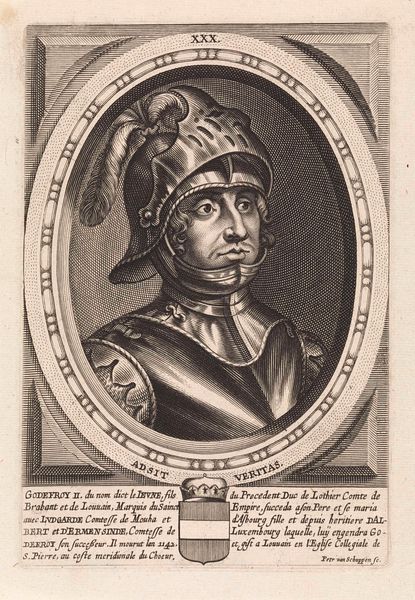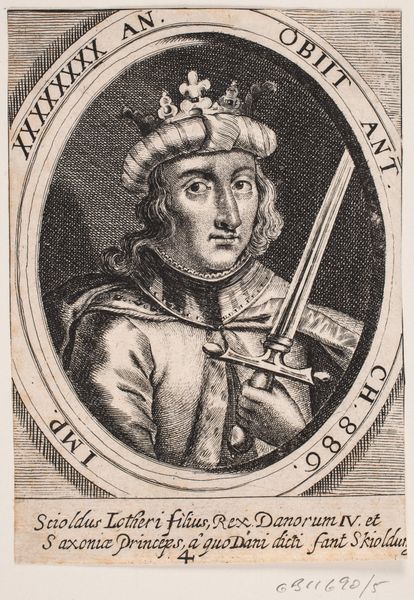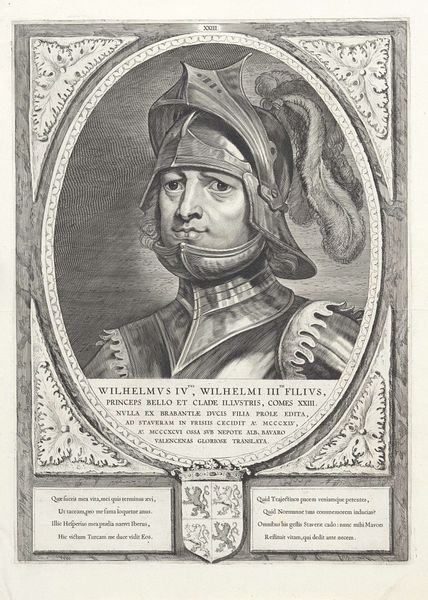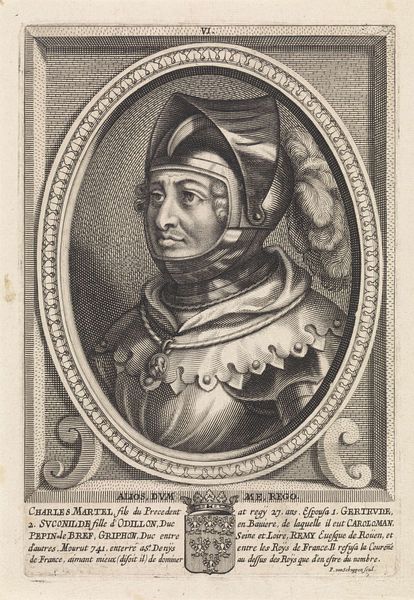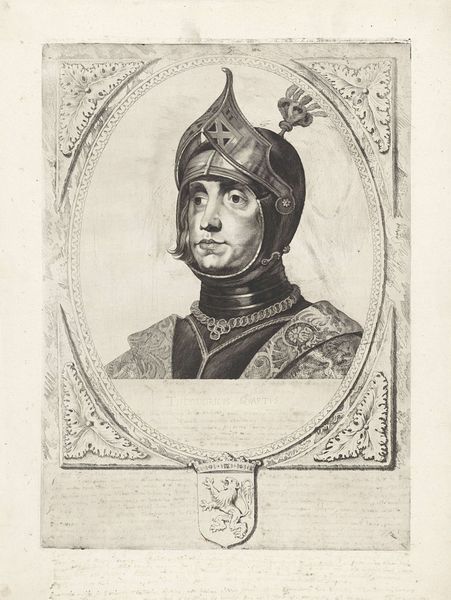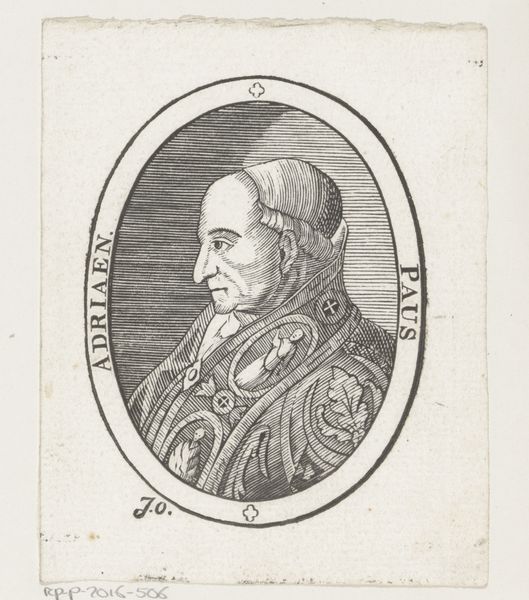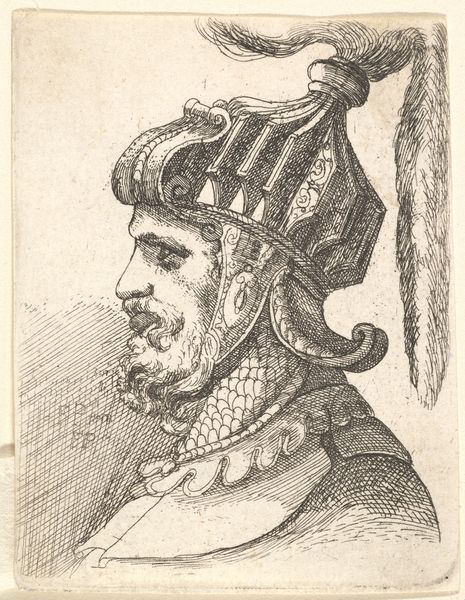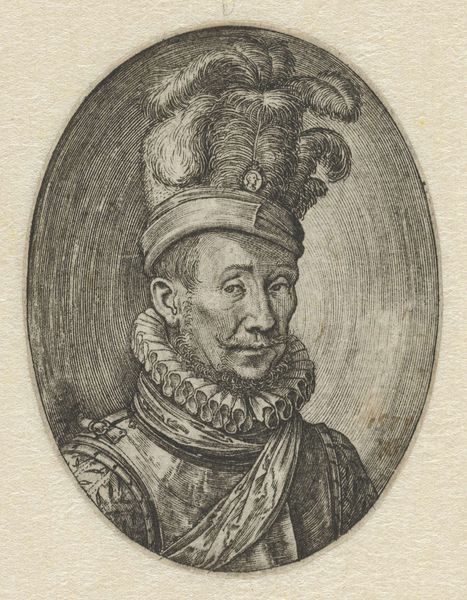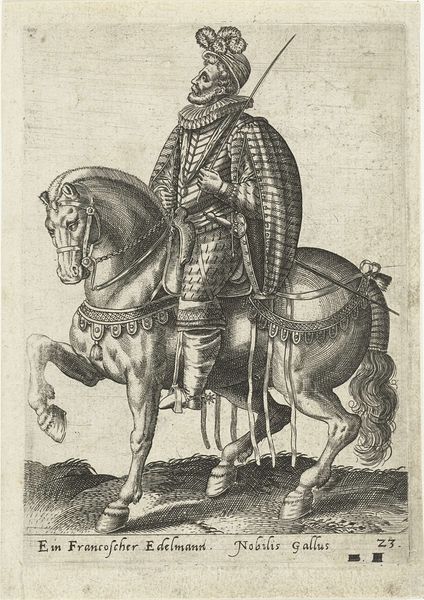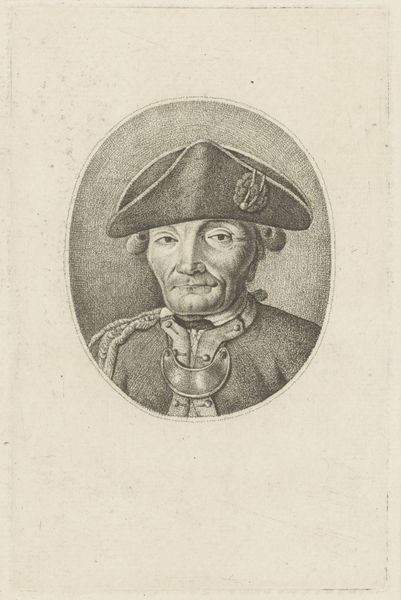
drawing, pencil
#
portrait
#
drawing
#
neoclacissism
#
11_renaissance
#
pencil drawing
#
pencil
#
portrait drawing
#
realism
Dimensions: height 39 mm, width 32 mm
Copyright: Rijks Museum: Open Domain
Curator: Here we have "Ovaal portret van een ridder," or "Oval Portrait of a Knight," attributed to Jacques Kuyper. The piece, housed here at the Rijksmuseum, is estimated to have been made between 1771 and 1808. What’s your initial take? Editor: Striking detail for a pencil drawing! The shading really gives the metal armor a palpable weight and texture. It has an almost photographic realism about the surfaces. Curator: Yes, and consider the historical context. This was a period steeped in Neoclassicism. Note the controlled lines, the emphasis on realism… It harkens back to the Renaissance ideals of heroism and virtue. But the selection of a knight as subject matter during this later era suggests an element of Romanticism, doesn’t it? Perhaps longing for a chivalrous past. Editor: Definitely. The craft is remarkable when you consider the means. The precision needed to achieve that level of detail with just a pencil – that’s intensive labor! And it shows a fascination with the way light interacts with different surfaces, especially metal. The consumption of images, even back then, relied heavily on the skills of the artisan. Curator: Precisely. And portraits of this kind weren't just about likeness; they were about projecting status, power, and connecting to an idealized vision of the past. This connects with the sociopolitical role that people wanted to have, presenting themselves with clear signs. The museum's role is crucial, as its the public role to exhibit such pieces of imagery. Editor: And look closely. It isn't just a drawing; it's a statement about material culture. The plumes, the ornate details of the helmet... these things were meticulously crafted. The artist is celebrating skilled production of luxury as much as he is commemorating any individual. Curator: A subtle intersection of art and craft. The work’s existence helps shape how we consider public representation through an intersection of social, and institutional lens, doesn't it? Editor: Exactly! This artwork challenges those boundaries. The medium seems modest – pencil on paper. Yet, the end result elevates the representation of skilled craftsmanship to the high art of portraiture. Curator: A worthwhile look at how even historical drawings hold up a mirror to then-contemporary aspirations and values. Editor: Indeed, it makes you appreciate the sheer dedication, labor and materiality of such portraits, challenging how we understand both art and production.
Comments
No comments
Be the first to comment and join the conversation on the ultimate creative platform.
